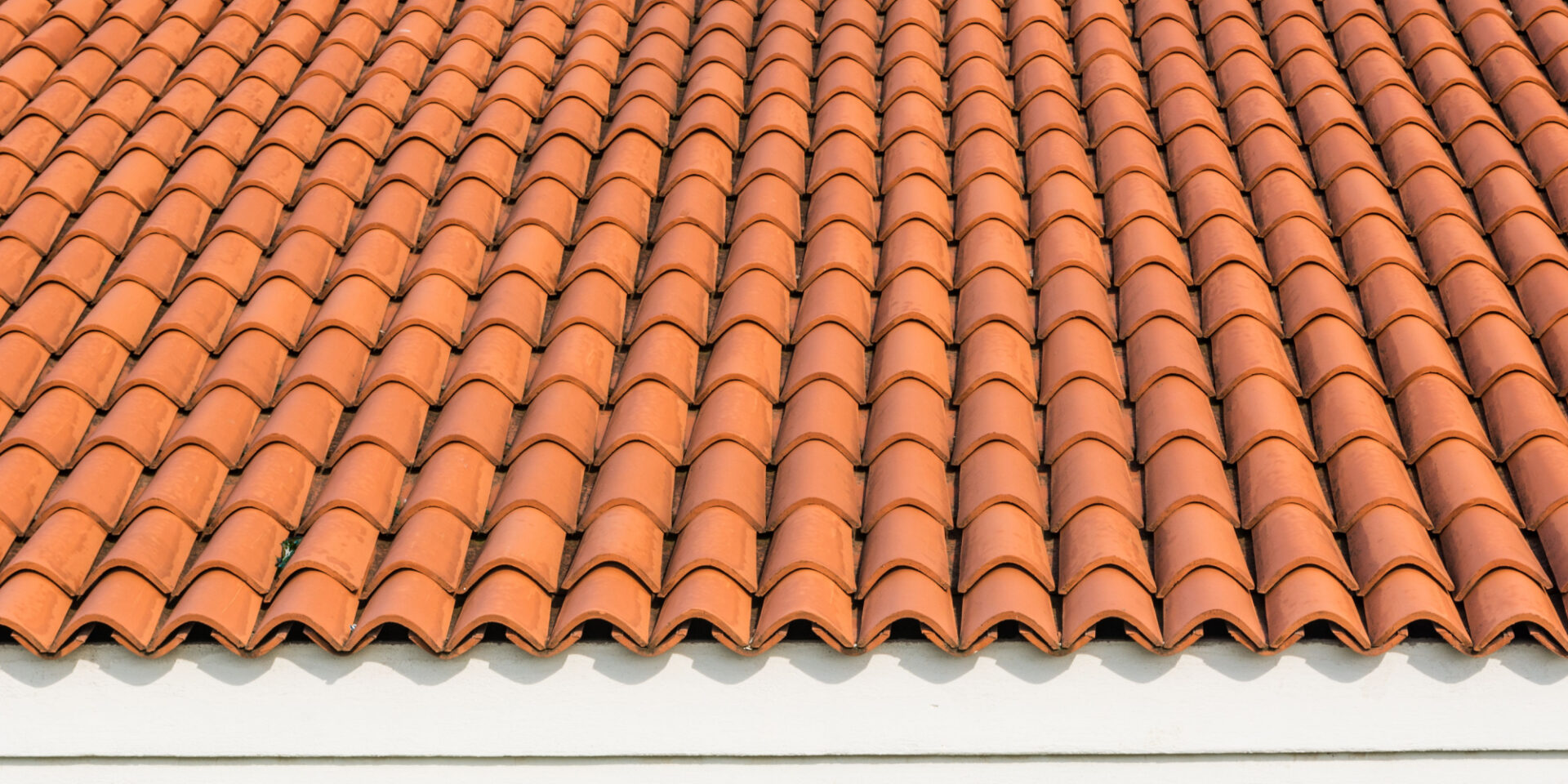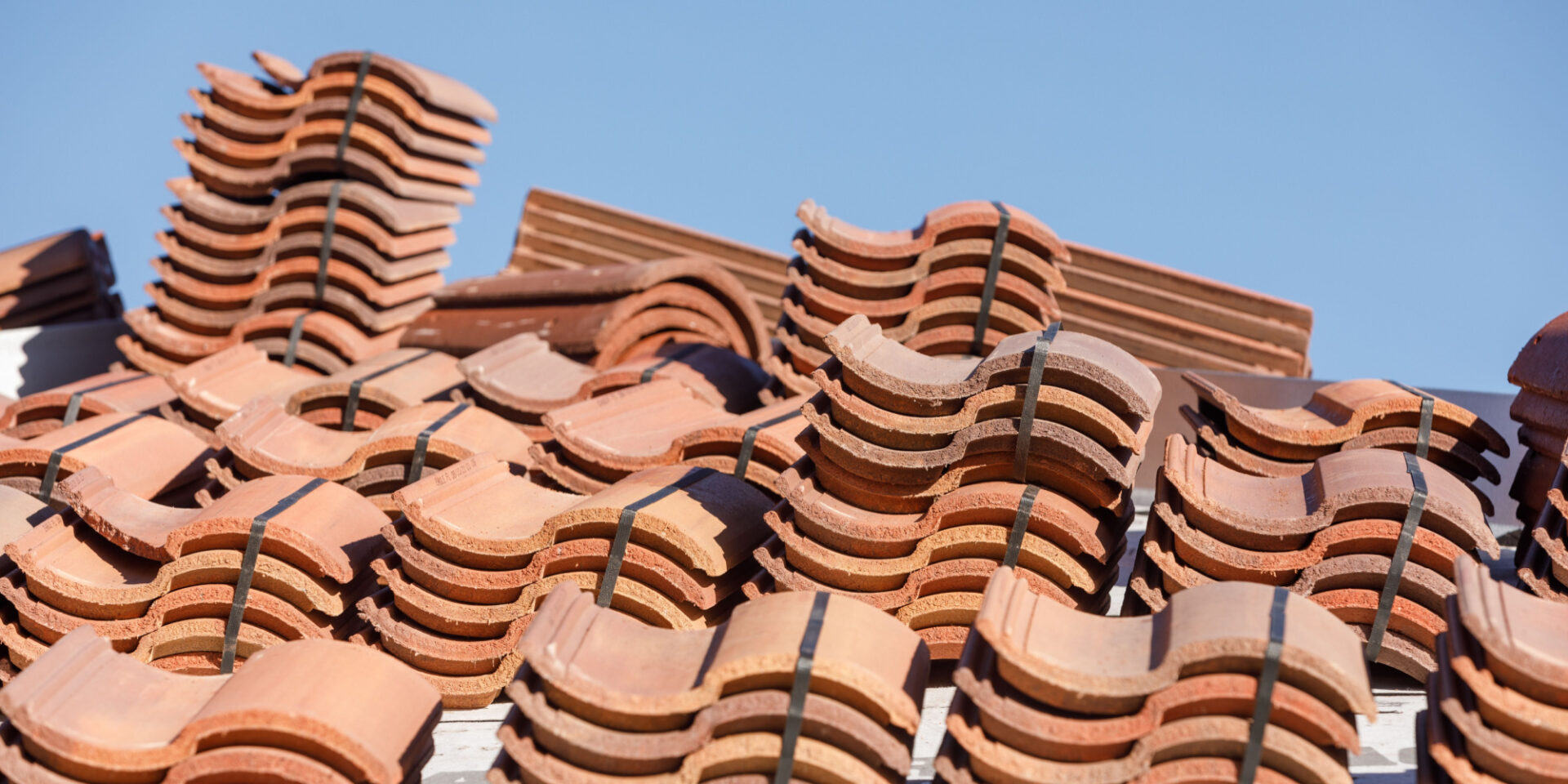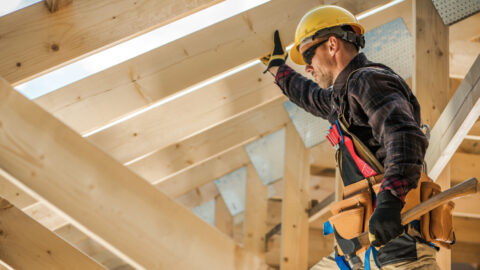Did you know that Florida was the first place in North America to get Spanish tile roofs? They were brought over by Spaniards in the 1700s, and they’ve been a staple for generations of Florida homes ever since.
But does Spanish tile roofing still hold up? We’re here to answer exactly that question. John Hogan Roofing is a local roofing company that has been working on all types of roofs across Florida for over three decades. Let us use that experience to walk you through everything you need to know about Spanish tile roofs in Florida.
To get started, let’s look at what separates a Spanish tile roof from other clay tile options!
What Is Spanish Tile?

Spanish tile is typically made out of clay, although it is sometimes made from ceramic. It’s also a type of barrel tile, which works by stacking tiles over top of each other to keep out the elements. But there are unique elements of their design that make Spanish tile unlike any other tile roofing material.
Notably, they’re formed into an “S” shape. This allows them to lock together, which helps keep the interior of your roof dry and protected. In this way, Spanish tiles create water channels for the water to harmlessly and naturally flow off your roof.
That covers the basics of what a Spanish tile roof is and how it works. Now, let’s talk about whether or not Spanish tile roofing is right for your Florida home.
Pros and Cons of a Spanish Tile Roof
No roofing material is perfect, and Spanish tile is no exception. Instead of looking for the perfect or best roofing material, you should look for the best one for your unique needs and situation. With that in mind, let’s talk about some of the pros and cons of getting a Spanish tile roof for your home.
Pro: High Wind Resistance
Tiles are generally a heavy roofing material. And while this narrows what kinds of roofs can support clay tiles, it also makes them very resistant to wind uplift. Spanish tiles are even better in this regard since they interlock, making them harder for the wind to remove.
As a result, Spanish tile roofs can resist wind speeds of up to 150mph. This makes them an ideal roofing material if you want to beautify your home while simultaneously protecting it against Florida’s unpredictable hurricanes and tropical storms.
Con: Easy to Damage
While Spanish tiles hold up well against wind and rain, they’re vulnerable to being shattered or chipped from impact damage like storm debris or hail. In fact, they can even be damaged by overly cold weather (although this is very rare in Florida).
While there’s no denying that clay tiles are easily damaged, there is good news. Replacing one or two damaged tiles is a cheap and quick repair. So while you should be aware of this before having a Spanish tile roof installed, it’s important to know that this issue won’t require a lot of time or money from you throughout the life of the roof.
Pro: Exceptionally Long Lifespan
Spanish tile roofs have an almost unmatched lifespan. As a clay tile roofing product, they tend to last around 50 to 70 years. But this is far from the limit of their lifespans. In fact, clay tile roofs can last for upwards of a century. This longevity has gone a long way in keeping clay tiles very popular over the years!
But it’s important to note that this kind of exceptional lifespan requires regular maintenance. Clay tile roofs don’t require a lot of repairs in most cases, but it’s still a good idea to get a roof inspection every two years to make sure that your roof is aging well.
Con: High Roof Installation Costs
One of the biggest hurdles to getting one of these roofs is the high cost of Spanish tile. Exact prices vary depending on the market and the specifics of the roof. But in general, Spanish tile costs range from $10 to $28 per square foot. This is much higher than the cost of a shingle roof, which would be closer to five dollars per square foot.
If this isn’t in your budget, you can always explore options like roof financing to make this durable roofing material more attainable. But there’s no shame in choosing not to get a Spanish tile roof because of the price—shingle roofs are the most popular residential roofing material largely because of their low price point!
Pro: Eco Friendly
If you want to take the environment into account with your roofing choice, Spanish tiles are an excellent option. Clay tiles are made of entirely natural materials and can be easily recycled, which makes them one of the best ways to go green with your roofing material.
In comparison, 11 million tons of asphalt shingles are thrown into dumps every year. This presents a great opportunity to help the environment when you invest in a Spanish tile roof!
Get Reliable Roof Replacement Guidance
Whether you’re sold on Spanish tile shingles or have more questions, the friendly staff at John Hogan Roofing can help. As evidenced by our great local reviews, we make the roof replacement process easy and simple.
To start, all you have to do is schedule your free roof replacement estimate. From there, one of our friendly roofing experts will chat with you to find out exactly what you need and conduct a brief roof inspection. After that, you’ll receive a customized roofing estimate! This estimate will include the full scope of work and costs. When you choose John Hogan Roofing, you never have to worry about hidden fees!
Whatever roofing material you choose, let John Hogan Roofing help with your roof replacement. With over 30 years of experience in Florida roofing, we’re the local experts you need. Reach out and see why we’ve been Florida’s top roofers for over three decades!
Spanish Tile Roofing FAQs

1. Q: Are Spanish tile roofs suited to Florida’s climate?
A: Spanish tile roofs are some of the best roofs for withstanding Florida’s weather. They can easily withstand high winds, rain, and even hurricanes!
2. Do Spanish tile roofs require a lot of maintenance in Florida?
A: Since Spanish tiles are so strong, they rarely fail on roofing systems. However, they can be vulnerable to impact damage and mold buildup, which is why biennial roof inspections are a good idea.
3. Q: Do Spanish tiles help with energy efficiency?
A: Yes, Spanish tiles reflect heat away from the home rather than absorbing it like shingles do. This means that in the summer, they can help cool your home and lower your energy bill.
4. Q: Are Spanish tile roofs worth the high cost?
A: There’s no denying that clay tile roofs are expensive, and Spanish tile is no exception. But while Spanish tile has a high upfront cost, the fantastic longevity and durability of the roof can make it a worthwhile investment!
5. Q: Can any roofer install Spanish tile roofs?
A: No, Spanish tile roofs are difficult to install even when compared to other types of tile. For this reason, it’s important to only choose experienced roofers who have successfully installed this type of roof before.
HAVE THE WORK COMPLETED RIGHT THE FIRST TIME
You May Also Like:
A Homeowner’s Guide to the Florida PACE Program for Roof Replacement
In Florida, a strong, reliable roof isn’t a luxury—it’s a necessity. But with the high cost of replacement, many homeowners are forced to delay this critical work, putting their homes at risk. While options like home equity loans or personal loans exist, there is another powerful financing tool designed specifically for Florida homeowners: the PACE…
Read MoreBenefits of Integrating Solar Panels with Your Roof in Florida
In the Sunshine State, it’s no secret that the sun shines bright nearly all year long. Florida is not only a paradise for beach lovers but also an ideal location for harnessing solar energy. If you’re a homeowner in Florida, you’ve probably considered integrating solar panels into your home, especially as the state continues to…
Read More15 Crucial Questions to Ask Before Hiring a Roofing Contractor in Florida
15 Crucial Questions to Ask Before Hiring a Roofing Contractor in Florida (And Why They Matter) In Florida, where hurricanes, heavy rain, and intense sunshine are part of everyday life, your roof is more than just a cover — it’s your home’s first line of defense. So, when it comes time for a roof repair…
Read More



